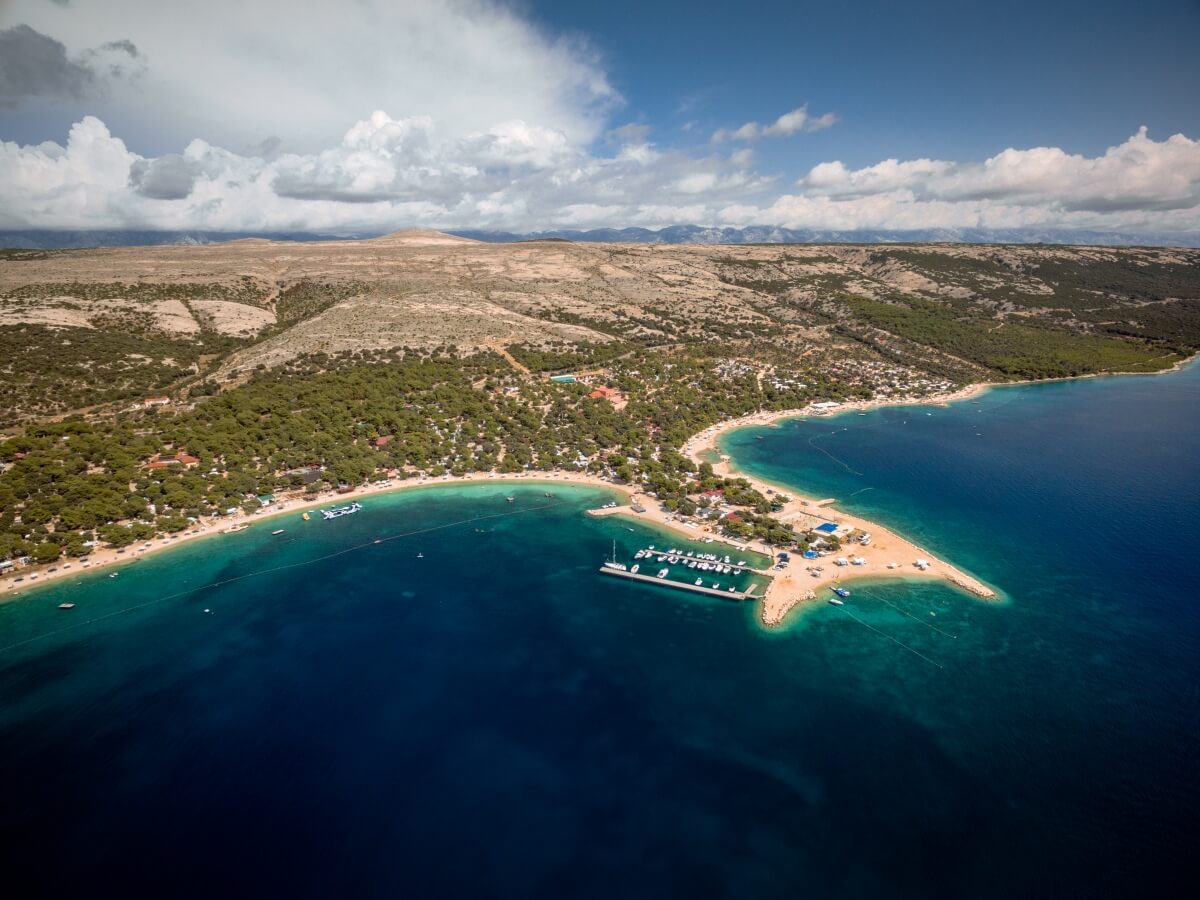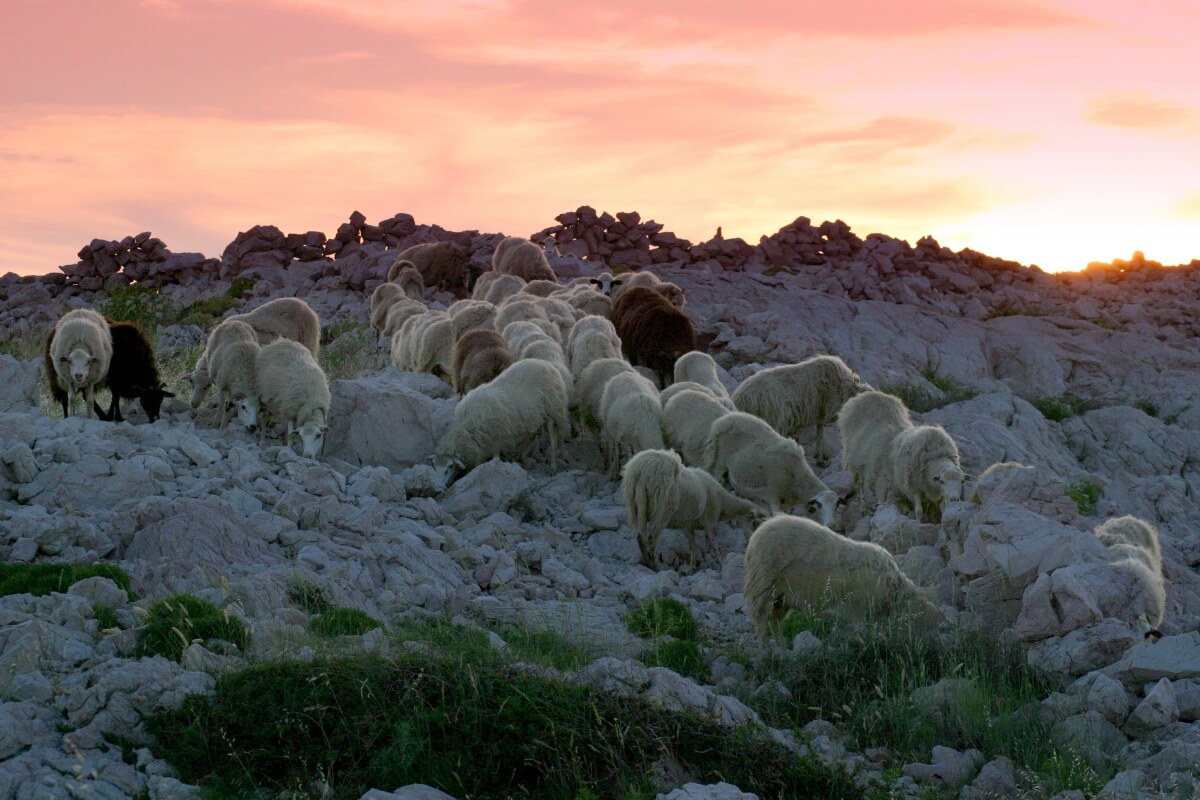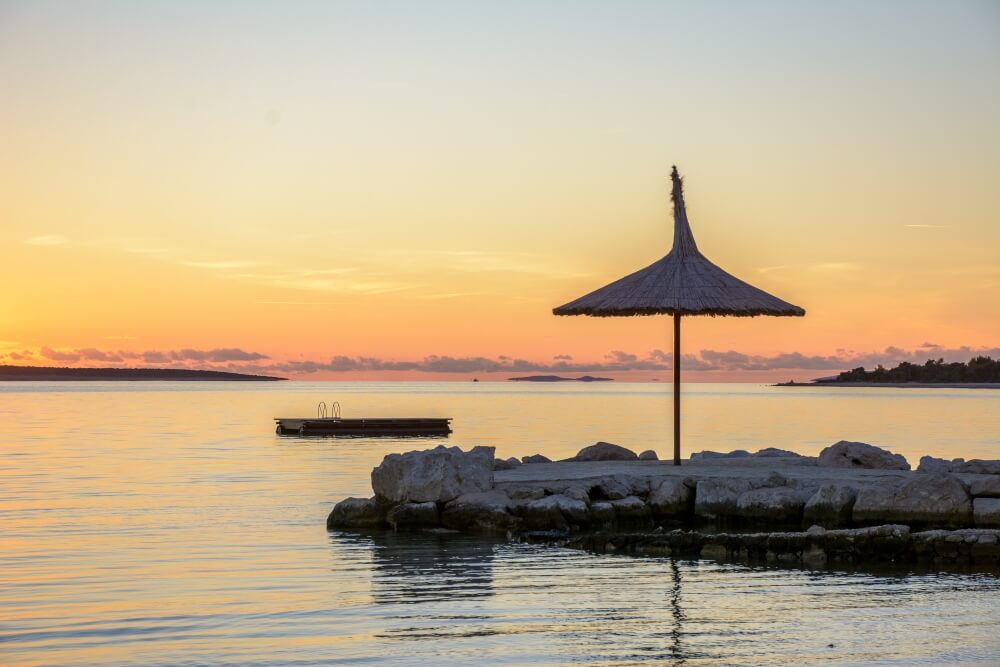Get ready to be enchanted by the nature of one of the sunniest Croatian islands.

When Croats think about Pag, the first association is Pag lace, which is inscribed in the UNESCO’s Intangible Cultural Heritage, and Pag cheese, distinctively flavoured sheep milk cheese famous both within and outside Croatia’s borders. Besides being the birthplace of these appreciated products, the island is a place of almost magical natural beauty in Croatia.
After you pass the grandiose Velebit mountain, you’ll get the first glance of Pag’s rocky landscape. Its moonlike looks are the reason many refer to Pag as the Moonscape island. But don’t let the rough surface fool you — green bays, sandy beaches, and pine forests hide on other sides of the island’s coast. Once you see lush green nature, you’ll immediately know that you came to one of the most beautiful islands in Croatia.

Pick your favourite beach
There are more than a few beaches you’ll want to dip your toes in when you find yourself on Pag. You can enjoy pebbly and sandy beaches that stretch all along Camp Šimuni, but if you want to spend your day outside of the camp, there are some great options, too. Čista beach is excellent for families with kids because of the shallow water and available amenities, while Ručica is ideal for visitors who want peace and quiet. If you like to disconnect completely, spend your day in the secluded coves near the town of Lun.
There’s one beach which confirms just how unique the nature of Croatia is. On the southwest part of the city of Pag, you’ll find Lokunja, a beach with an abundance of peloid layers, known as curative mud. It’s used to relieve arthritis and rheumatic diseases, but also to detoxify and rejuvenate the skin.

A visit to a swamp or the saltworks? Both!
A little closer to camp Šimuni, you’ll find Kolansko Blato, an ornithological reserve whose waters are home to a variety of vegetation and animal life. A visit to one of the few remaining swamps in Europe makes a great day trip of observing different Mediterranean bird species.
Last, there’s the salt, often called the white gold of the island of Pag. The salt pans were mentioned in 9th-century chronicles, which puts them among the oldest in eastern Adriatic. First, it was extracted through natural evaporation, but the traditional technique was abandoned after the construction of the salt factory. The Pag saltworks covers three million square metres, which makes it the largest facility of this kind in Croatia. For centuries, the product was crucial to life on Pag and still remains important due to the big role the production plays in the modern life of the people of Pag.
Are you ready to discover the island of Pag in Croatia? Book your holiday and start making plans!